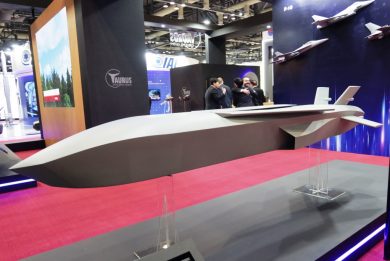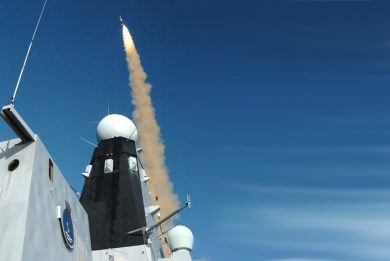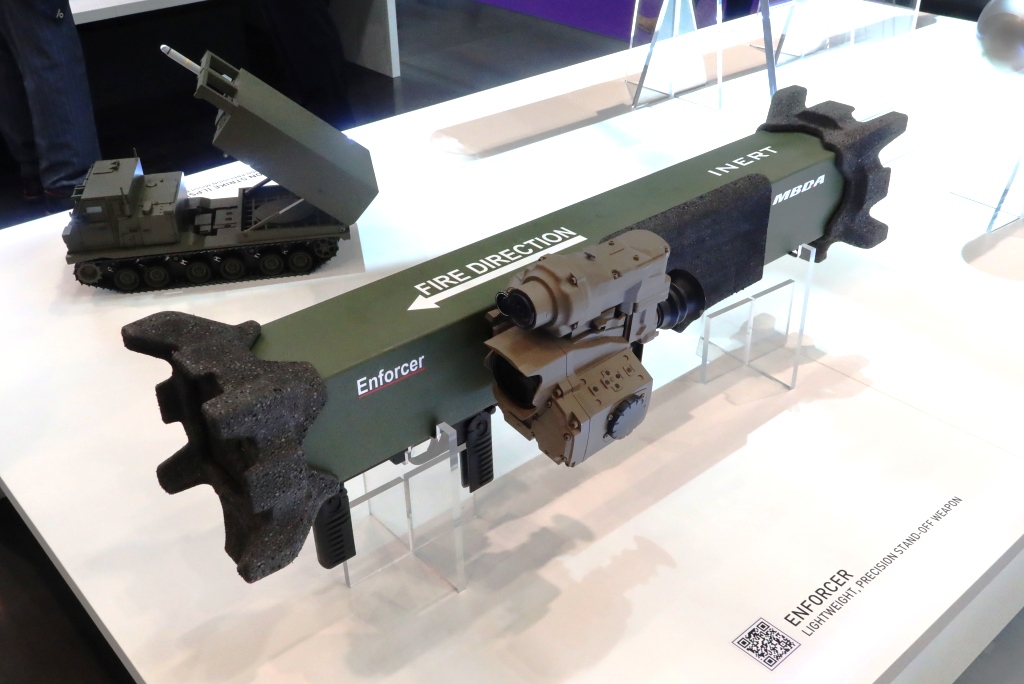
MBDA Germany Enforcer lightweight missile is ready for production and to generate new variants
During a visit to MBDA Germany EDR On-Line was briefed on the current status of the Enforcer lightweight infantry missile programme, as well as on the potential developments that this weapon system might generate in the early future
At MBDA Germany Schrobenhausen facility the Enforcer assembly line was empty as the production of the pilot batch having been finished, the line being made ready to start full rate production in a very short time, the system being in the very last approval phase by the customer. Initial deliveries of the serial version of the light shoulder-launched missile to the Bundeswehr are planned for 2024. No numbers were provided by the company on the contract filed by the German MoD, however EDR On-Line understood that the systems that are part of the firm order will be produced in a two-year timeframe, while add-on batches might be ordered.
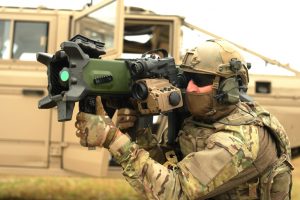
The Enforcer is one of the few shoulder-launched missiles, as most use a bipod or tripod, its mass at launch being less than 7 kg and less than 1 metre long. It takes to the target a multi-effect warhead, developed by the Schrobenhausen-based TDW, an MBDA subsidiary, at over 2,000 metres, the Bundeswehr requirement being 1,800 metres. The warhead features an explosively-formed penetrator (EFP) element, to deal with light armoured vehicles, a forward fragmentation effect, and a side fragmentation effect provided by the warhead structure. The mode is selected by the operator prior to the launch according to the type of target, the fuse mode depending on the effect, three modes being available, point detonation, delayed or time for airburst effect. The Enforcer, in the available version that will be soon delivered to the Bundeswehr, is not an antitank weapon, the 90 mm calibre (in fact the missile diameter is 89 mm) warhead being designed for other types of targets. The operator can also select the sensor that will lock on the target and guide the missile towards it, two options being available, an imaging infra-red and a TV. Once selected the desired effect the gunner puts the crosshair on the target, selects the sensor to be used, locks the missile onto it and squeezes the trigger. He can then immediately change position as the Enforcer is a fire-and-forget weapon. The seeker correlates the image with that acquired initially, the contrast correlation tracker having a refresh rate of 25 frames per second, hence even if the light changes or the target moves under different conditions the tracker continues to guide the Enforcer missile towards the intended objective.
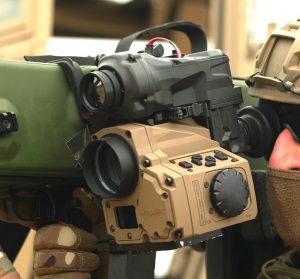
Initial tests were carried out with the Hensoldt Dynahawk fire control system. However in September 2023 MBDA carried out the first live firing using a newly developed FCS, the FCS14 by Aimpoint. The FCS14 can be fitted to a number of squad or platoon weapons to increase their effectiveness, firing tables being loaded to ensure maximum accuracy. In its basic form it is fitted with a x1 optical channel providing a 12° horizontal and 16° vertical field of view, and with a Class 1 eyesafe laser rangefinder operating in the 1,550 nm frequency with a 4 km range, the LRF being key to provide accurate distance to the Enforce r programming system that inputs the time to target when the operator selects the airburst mode. In that configuration the FCS14 has a mass of 1.1 kg, the day channel being compatible with night vision goggles. Aimpoint also developed a Dual Sensor Attachment (DSA) module that increases the mass by 630 grams adding however a day camera and a thermal camera, with respective HxV FOVs of 11°x 14.5° and 9°x12°. The day camera has a 1280×1024 pixels CMOS matrix providing a high definition image, while the thermal channel is based on an uncooled sensor with a 640×480 pixels matrix with a12 μm pitch. Both channels have four magnification levels, x1, x2, x4 and x8.
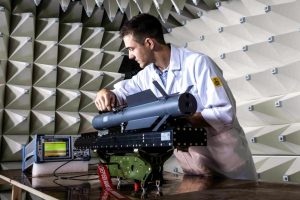
As said everything is ready for starting mass production. All rigs and special tools purposely designed according to the indications of MBDA workforce have been qualified and then tested in the pilot batch production, including the so-called “chicken grill” used to keep the missile parts together during the laser welding process.
The Enforcer development story is however far from being concluded. For the time being the Enforcer-X is a concept, but the antitank version of the MBDA lightweight missile might become reality as soon as a launch customer will materialise. It will feature maximum commonality with the original missile, the main exception being the warhead, TDW providing a tandem shaped charge warhead purposely made to penetrate tank armour behind ERA. Due to the type of warhead the airburst mode will not be present, the other main feature being the availability of two attack modes, with a direct trajectory or with a lofted one, the latter allowing attacking the target from the top. This will lead to some changes in the missile programming and therefore in the menu available to the shooter, the system range remaining at 2 km.

In the MBDA Germany showroom a further derivative of the Enforcer could be seen, attached under an airframe wing. Also for the time being only a concept, the air-launched version is being developed in cooperation with XMobots, a Brazilian UAS company that intends using it to weaponise its airframes, an example of a possible solution having been exhibited at the LAAD exhibition in Rio de Janeiro in April 2023. MBDA clearly stated that this is not a Bundeswehr requirement, although also the Enforcer in its current version was not of interest of the German Army at the very beginning.
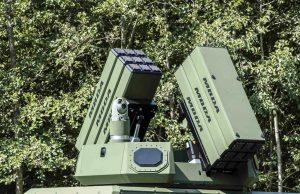
A third evolution of the Enforcer is the Small AntiDrone Missile, SADM in short. A first impression of that version was shown at ILA 2022, a nine-missile launcher being installed on top a Boxer fitted with a Rheinmetall Skyranger 30 turret. This solution is proposed as the answer to Capability 1 ground based air defence needs, the one aiming at countering Class 1 UAS, that is unmanned airframes with a mass under 150 kg, which is currently not covered by existing systems in service with the German Armed Forces. Such a solution allows to select the effector according to the threat, with the SADM capable to cope with targets at distances over 2 km and under 5-6 km, while for shorter ranges the effector of choice is the 30 mm cannon.
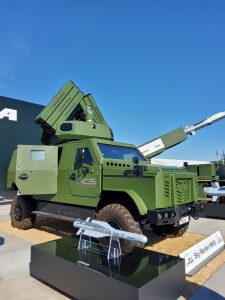
EDR On-Line understood that the requirements for the Nah- und Nächstbereichsschutz, NNbs in short, the short- and very short-range air defence system, are known, hence the decision of MBDA Germany to leverage the work done on the Enforcer to develop a ground-to-air missile starting from some existing building blocks. Compared to the current Enforcer the SADM will obviously be quite longer, as a booster will be added at the rear, it will have a different seeker, and the warhead will be adapted to the new role, probably giving up the EFP element while increasing the fragments, which dimensions might also be optimised for the new role. Starting from an existing system will allow reducing time and cost. Beside the cannon/missile solution, a vehicle carrying two nine-missile launchers was also shown, the SADM being probably also effective, at least partially, against targets other than UAS.
Photos courtesy Aimpoint and P. Valpolini

